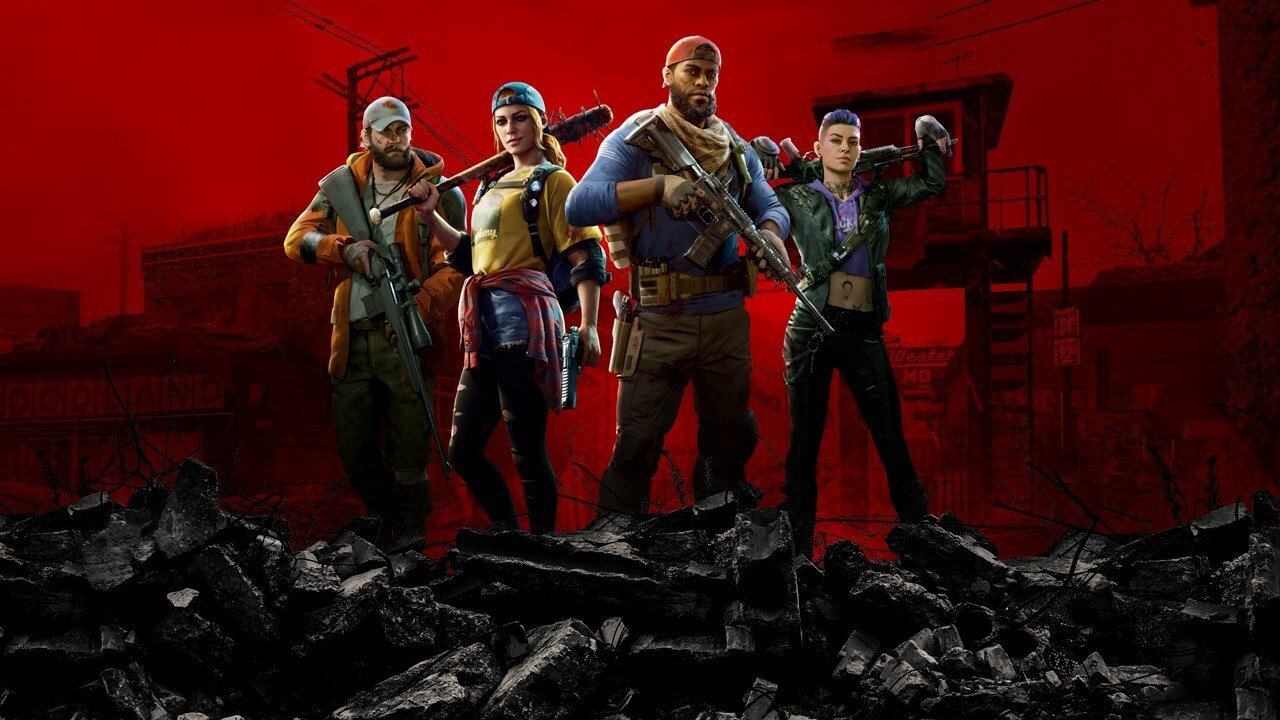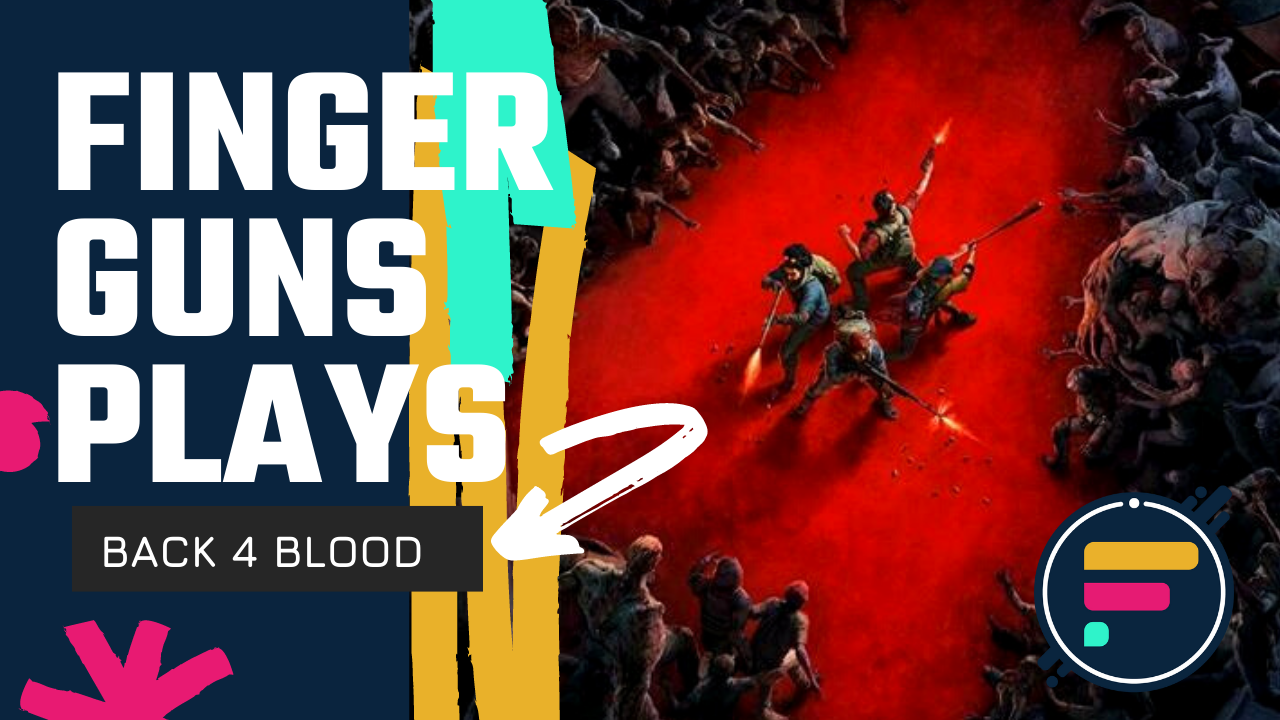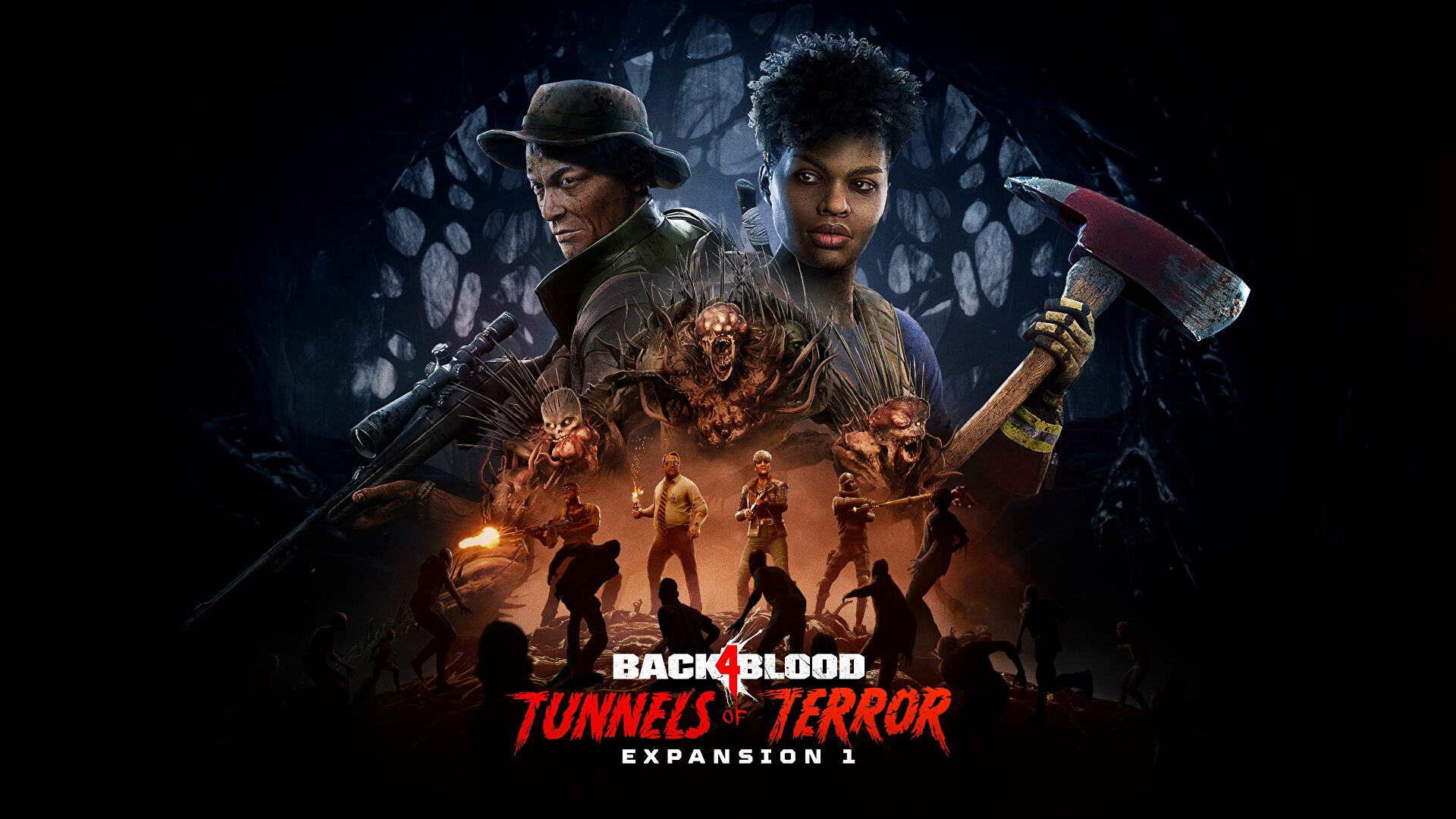Back 4 Blood Review (PS5) – Guess Who’s Back, Back 4 Blood
As the bullets fly, limbs propel off of bodies, grenades decimate cartilage and shotgun rounds rip through Ridden flesh, a certain catharsis kicks into motion as you rapidly dispose of as many flesh-eating foes as humanly possible before you’re torn limb from bloody limb. Back 4 Blood channels all of the best elements from Left 4 Dead’s chaotic, bullet spraying, intensely satisfying action, but stumbles in a couple of areas, leaving it vulnerable to the savage hordes.
It’s been a long time since the original L4D series emerged from the undead earth and captivated the audience of co-op shooters, propelling itself into gaming folklore forever more. Built on replayability, maximising every ounce of potential for a run and demanding perfection from those who wished to master it, the original two titles have persisted for far longer than many other games, and with good reason, they were brilliant.
So, with another entry long overdue and no movement from Valve on continuing the franchise, the developers decided to take matters into their own hands, building the spiritual successor with the hope of recapturing the undead magic. Back 4 Blood is finally here, so have the intervening years allowed this shambling project to evolve into greatness, or does it decay into mediocrity?
Rip, Shoot and Tear
Cooperative, team-orientated action is the premise that built the original series into what it is today. In this respect, Back 4 Blood maintains the same electric, pulsating form as you annihilate your way through hordes upon monstrous hordes of Ridden – the new replacement for traditional zombies.
Levels consist of maximising your loadout – randomised for each “run” – to ensure maximum explosive firepower to reach the end of your goal without the Ridden turning you into their next snack. There are masses of common fodder zombies which you can slice through with little effort, only dangerous in larger, overwhelming crowds but which you must be constantly aware of.
Early on however, you’ll be introduced to mutation Ridden, effectively acting as the special enemy types. A giant, hulking Reeker which explodes with gallons of acid spraying in all directions. The towering Tallboy, complete with giant, steroid-gobbling hulk arm capable of grabbing you up with ease, strangling you out of existence without support. The stealthy, nimble Stalker jumping from the shadows to take you into a chokehold embrace. Each of the special Ridden types have 3 variations complete with different abilities that will make your life just that more… painful.
For veterans of L4D 1 and 2, there isn’t much here that’s especially new or fresh, apart from their aesthetic and slight variation in powers. Back 4 Blood is more focused on evolution rather than revolution of its flesh-hungry creatures, so don’t expect too many surprises on this front. In some ways, it works in its favour as you can quickly get to grips with the enemy types to learn how to effectively counter them, but I was slightly disappointed to not see some more new special enemy types or more creative abilities.
They’ll pose a significant threat, especially after the first difficulty, which means you won’t be bored of seeing them. Whether it was hour 1 or 13, the sight of a Tallboy cascading towards you with the intent of smashing your skull never ceased to be terror-inducing. What was more limited however, was the re-use of the two main “boss” Ridden types, which are repeated throughout the campaign, making them less of a spectacle with each reappearance. The last mission contains a unique boss fight, but otherwise you’ll be seeing the same decaying monsters frequently.

We Need Guns, Lots of Guns
Luckily, Back 4 Blood provides a wealth of lethal firearms for you to send the Ridden straight back into the dirt, only more dismembered and broken than they already are. There’s a variety of assault rifles, SMGs, shotguns, sniper rifles, explosive items, pistols and useful equipment to aid you in your confrontations with the hordes. Weapons come in 4 colour-coded varieties, with stronger types becoming more accessible the further into runs you progress. Each weapon can also be upgraded through barrel, magazine, optic and stock attachments to improve its base stats.
Gunplay is punchy, with strong feedback mechanics to let you know just how much carnage your wreaking upon the enemy. Limbs will be blown apart, heads explode with a satisfying gusto as you sink your knife into their bloody skulls, shotgun blasts carve through crowds, gore on display at every turn. Sound design for each weapon is suitably powerful, with explosions from grenades or pipebombs satisfyingly devastating. It all creates the impression of being a one man army, giving you that rewarding power trip these games crave.
Much of this is aided by the use of haptic feedback through the trigger as you send barrage after barrage of bullets hailing into the crowds. Though, you may find your trigger finger getting slightly achy after prolonged play from this, which was my experience. The very generous auto and sticky aiming also contribute by allowing you to snap between enemies at will, keeping the action moving at a frantic pace. You have very little time to think in Back 4 Blood, so luckily the combat mechanics feel intuitive and rewarding, meaning it rarely became too dull even over longer play sessions.
It wasn’t all bloody rainbows and dismembered sunshine however, as the auto aim could sometimes snap you away from a target you were actually gunning for and certain weapon types like the sniper rifle and melee options like the bat or machete are virtually defunct or pointless within the meta. Sniper rifles are simply too slow firing and their stopping power is wasted on common Ridden types, effectively being a wasted slot for a weapon. Meanwhile, melee weapons are again shafted into the pointless category by the upgrade to your melee bash that turns it into a one-hit knife of destruction. You’re better off having two weapons of any other variety as a result, which is a shame, because smashing a Ridden’s head in with a bat should never be disincentivised, but it kind of is here.

Another Day, Another Run
With the gunplay and combat mechanics being expectedly solid and enjoyable therefore, it falls on the structure of Back 4 Blood’s content to incentivise you to engage with it. Back 4 Blood does well here, offering quite a lot of quick-fire and easy to jump into content for both shorter and longer play sessions.
There are 4 acts, with each act having a series of missions that you must progress through in a linear fashion. Missions will have anywhere from 1-5 levels to complete, so an act may have 4 missions, 2 levels for the first, 4 for the second and so on. It makes much more sense when you see it visually, but rest assured there’s plenty of Ridden-slaying action to be had. It took me roughly 8-10 hours to finish the campaign on the easiest difficulty (more on the difficulty curve later), and this was with some repetition of earlier levels due to playing with friends or progress not counting within the solo campaign mode.
With 3 difficulty levels to attempt to master, secrets to find within a number of levels and generally trying to optimise your speed and efficiency through the acts, there’s scope for dozens of hours worth of long-term play. The only barrier to this will simply be how much fun you glean from the core combat and the levels themselves. Personally, I found some of the level design was relatively standard, with a few standouts raising the quality bar occasionally, which does put me off continually repeating the same content. Luckily, it does look like this will be addressed through future DLC, but they may need to focus on future content being more creative than a lot of what’s currently on offer.
Most levels can be completed in anywhere between 5-20 minutes, with later acts having longer sections that can border on being slightly too bloated, but it does make it easy to dip in and out depending on how much time you have. I’m not completely convinced that what’s here is enough to really hold the attention of most players for the longer-term, but for veterans of the L4D series and those who have a dedicated co-op crew, I can envisage them having plenty to sink their undead teeth into here.
It’s worth mentioning there’s also a PvP mode called Swarm, where two teams take it turns playing as Cleaners and Ridden special mutations. The survivor team has to stay alive as long as possible against the swarm and Ridden players, while the Ridden team can level up their mutation abominations to become stronger as the match goes on. It’s best of 3 rounds and it works well. I wasn’t especially invested in this mode, but I played a good few matches to get a sense of it for review. While not providing the kind of long-term challenge and engagement of a more dedicated PvP title, it’s a fun distraction and having the opportunity to try out the Ridden’s abilities was pretty cool, if for a small burst.
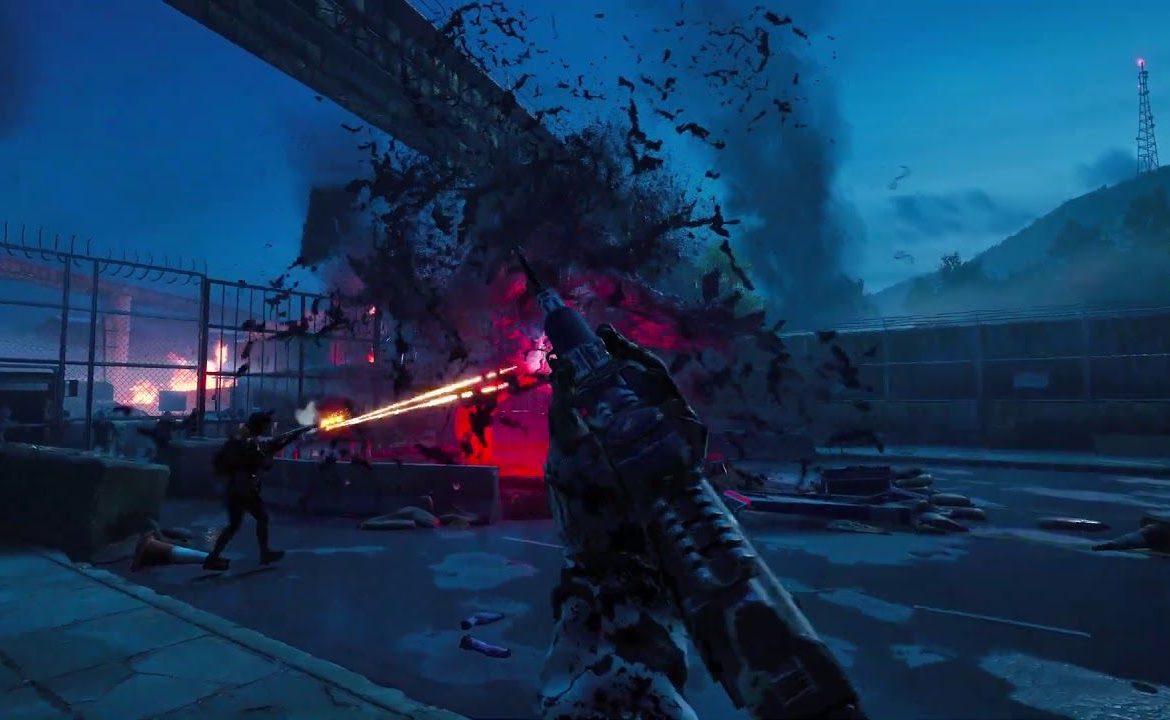
It’s Dangerous To Go Alone (Or With Bots)
What may also influence your playtime, is whether you choose to face the Ridden with the… “assistance” of the brain-dead AI bots, the roulette of random players online, or a squad of buddies you can sync up with. To absolutely no-one’s surprise, playing with friends is by far the most optimal option for survival. Having played a lot of the beta in a squad and teaming up with a fellow Finger Guns survivor in the main release, it was clear that voice-chatting and coordinating made a massive difference to both our enjoyment and ability to complete Back 4 Blood. There’s just nothing quite like the organic chaos that comes from your buddy launching themselves off a ship, into the sea, in the middle of a desperate escape that gives the same sense of hilarious adrenaline.
As mentioned before, the bots are unreliable at best and frankly idiotic, suicidal, useless tools at worst (they were at their worst the majority of the time). On the lowest difficulty, you can get by with a squad of the more brain-dead than the Ridden, but anything above that and you’ll be having a torrid time. While they may mark items, point out enemies and heal you, they’ll also refuse to do anything towards objectives, will drop their own ammo to their own detriment, sometimes refuse to shoot at the mutation Ridden and even get stuck jumping into vaults they can’t vault. They’re largely worthless, so don’t go into this with the intention to play solo if you have been considering it.
With randoms online, it’s a decidedly mixed experience. Some other plucky survivors are welcoming, encouraging and will communicate as much as possible with the limited in-game tools. I definitely built up some camaraderie on more than a couple of occasions. Unfortunately, you’ll also come across some pretty toxic, trolling players who’ll purposely alert hordes, refuse to heal or revive teammates or will play as lone-wolves when Back 4 Blood heavily punishes you for doing so. It’s not the worst experience, but if you have people you know to enjoy it with, you’ll have a much better time with it.
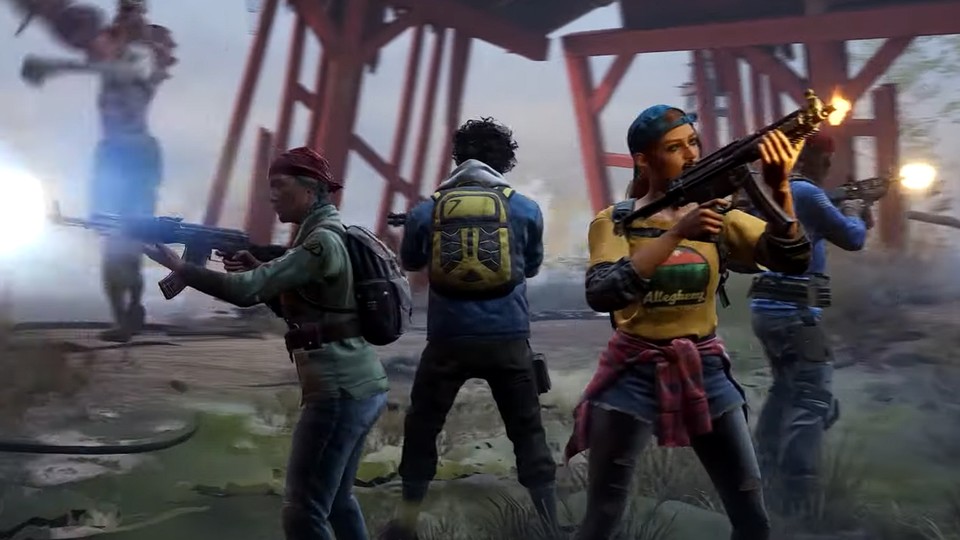
Flash Those Cards
Outside of the levels, there’s a small hub area complete with a shooting range to practice your aim, as well as a variety of options for customising your character’s looks and your profile. Most importantly, this is where you can engage with one of Back 4 Blood’s main unique mechanics: card decks.
As you play you’ll accrue in-game currency to purchase sets of “supply lines” which provide you with cosmetic items and new cards. Cards provide various in-game buffs, boosts, abilities and trade-offs. Basic types may increase bullet damage and health, while others can increase your entire squad’s ammo capacity. More creative cards may for example provide you with increased damage and unlimited ammo for a short time after a player is downed or provide you with higher damage output per level the more mutations you defeat.
A deck has a max limit of 15 cards that you collate prior to runs, with them appearing in-match in the order you select them. At the start of each level you can select a card from 5 in your deck and so the further you progress in an act, the more cards you’ll be able to stack onto yourself and your squad. It comes across slightly gimmicky at first, and to be honest more casual players can probably get away with not paying any attention to the system, especially on easier difficulties.
However, the more I played, the more the depth of this system revealed itself. With 4 different classes of cards, the more you unlock, the more you can specialise what can of role you want to play in your squad. Want to be the medic? Kit yourself out with heal bonuses and squad boosts for being incapacitated. More of a thick-of-the-action player? Get all of those damage enhancing cards and the ability to sprint and fire all at once. The card system encourages you to think about what kind of survivor you want to be, and allows you to make it your own. Additionally, it allows you to constantly be chopping and changing each run to provide some much needed variety and extra spice.
It’s not strictly necessary or essential, but enough thought and effort has gone into it to make it worthwhile. For higher difficulties too, it’s also essential to consider your card composition and order, even more so on a squad level so you can compliment each other’s loadouts. I’m not averse to card mechanics in games and luckily Back 4 Blood’s is one of the better implementations of it, even if it’s not especially game-changing.
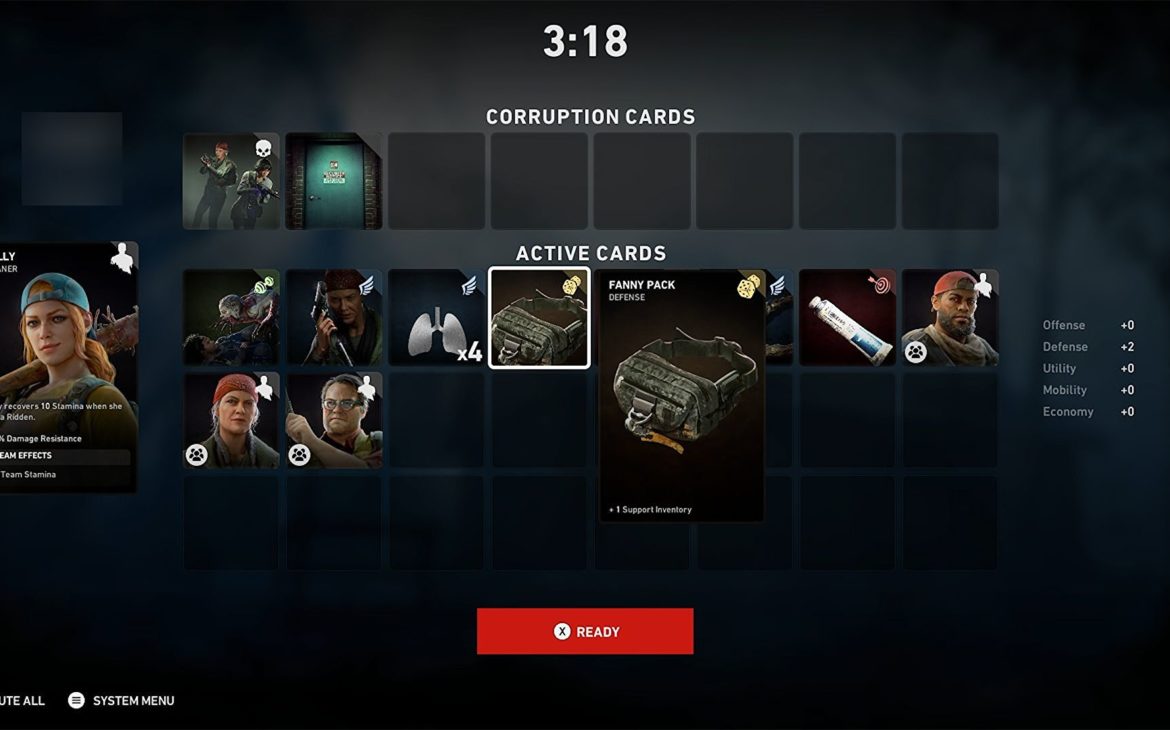
Curb Your Difficulty Enthusiasm
One of Back 4 Blood’s major issues however, is the current state of its difficulty scaling. There are 3 options at launch: survivor, veteran and nightmare. Survivor isn’t strictly easy per se, but it’s absolutely manageable and I’d recommend starting here even for experienced FPS players and those with previous history in L4D. There’s a solid ramping up of challenge as the campaign goes on, but it’s patchy in places, with some of the earlier levels causing more failures and retries than a lot of the mid and later stage levels.
This isn’t particularly where the issue lies though, as survivor difficulty on the whole is nicely balanced for starting out. What isn’t very well balanced, are the other two options. Jesus. Christ. Veteran difficulty alone is positively brutal. So unforgiving in fact, that the majority of people I’ve played with having failed to get past the second level, on account of getting wiped out so easily by just a single horde or the wrong group of specialised mutations. A couple of direct hits is all it takes to down you, and given you have no dodge, block or evading options outside of running the Hell away, you’ll easily get overwhelmed with little chance to recover.
I tried nightmare too a few times and even more experienced teams I’d joined were getting utterly bulldozed by the frankly insane spike in challenge. It’s telling that barely anyone has finished Act 1 on veteran (0.6%) and nobody at all has finished it on nightmare, while the majority are cantering through survivor relatively easily. It almost feels like there needs to be a 4th option between survivor and veteran to smooth the ridiculously massive jump in what’s required of you.
I’m not against having high difficulty options and for the dedicated section of the community it presents a gut-busting challenge to keep them invested for weeks to come. It just currently doesn’t feel well balanced at all. With only 1 continue per run, it only takes a couple of mistakes to put you back to the starting point of a series of levels in a mission, which only adds to the frustration when you make great progress for 95% of a level only for a devastating horde to swarm in and smash it all to pieces.
The developers have acknowledged the issue with difficulty spikes from the beta, so hopefully they’re going to smooth this out in future. Just be aware it can be rough going if you make the step up.

Bring On The Quips
Back 4 Blood’s story is also unapologetically basic. There’s a barebones narrative with a small handful of cutscenes at the start and end of missions or acts. It’s more there to give some context for your Ridden-slaying escapades, but it’s largely forgettable, relegated to background noise.
Of the 8 playable characters, each has their own dialogue and background story they’ll randomly spew out throughout levels. The problem is, with all the mayhem going on and your focus being on, you know, surviving a bunch of murderous swamps of bloodthirsty beasts, you won’t even really hear nor pay attention to much of it. Some of the dialogue occasionally lands with humorous quips or amusing one-liners, but a lot of it again just feels fine. It’s inoffensive but can be slightly repetitive the more you replay missions.
Basically, if you’re here for story, you’re barking up the wrong zombie-infested tree. There’s a very basic framework to hold it all together with some committed voiceover from quite big names in the voice acting industry, there’s just not a lot of substance for them to work with. You can find quite a lot of environmental story-telling through little details in the shelters you’ll seek haven in, which is nice.
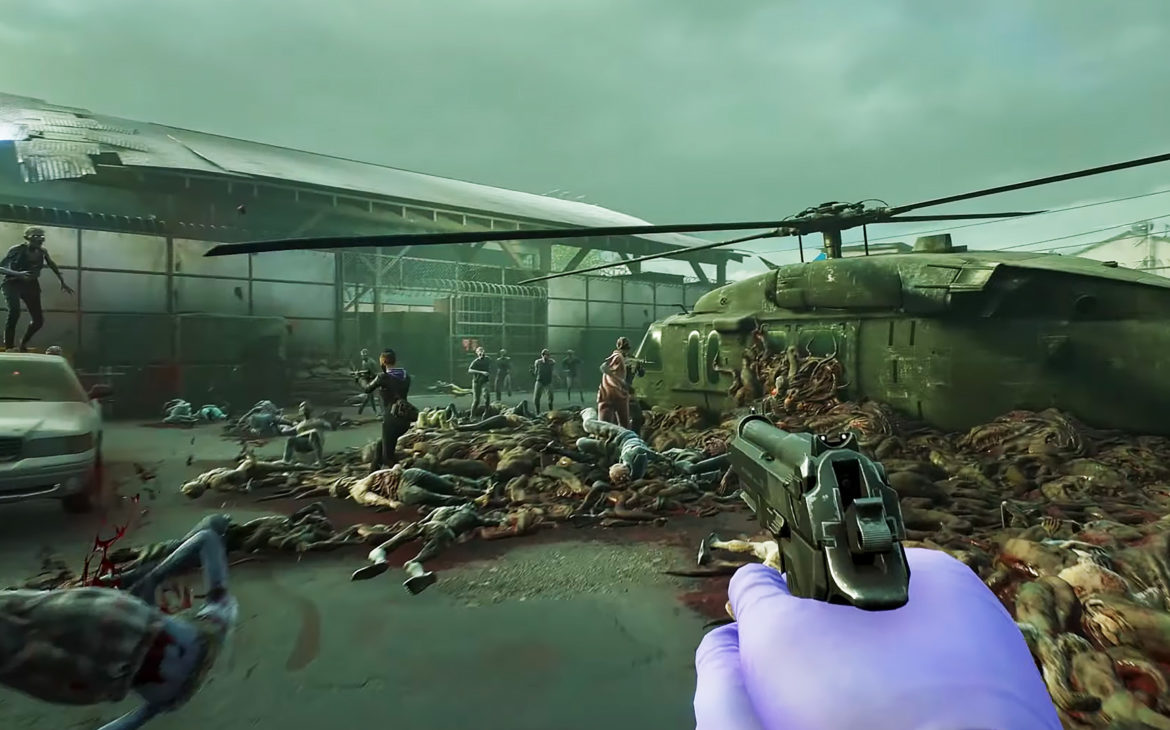
A Electrifying, Zombified Performance
Back 4 Blood across the board looks pretty damn good. Running at 60fps on PS5 and with some stellar atmospheric design, there was some epic moments throughout the campaign. Whether it be sprinting across a derelict ship as the crowds of Ridden chased relentlessly behind, or the glitzy bar you’re tasked with defending to the last, Back 4 Blood has some popping lighting effects and menacing fog or darkness variations. The gore, to a sadistic eye, is gorgeous to behold as you blast limbs and rip through the enemy lines.
The creativity does have its limit however, with some areas re-used one too many times across the campaign and some of the middle missions having relatively bland locales you’ll battle through. It can start to merge together if you play for a few hours at a time, to the point you may stop taking much of it in. But then, out of nothing, there’ll be a brief moment of downtime as you cross a lake or look out over the ravaged landscape, soaking in the sun and beauty of this destroyed world.
Performance wise, the framerate holds up remarkably well, most of the time. Given there can be dozens upon dozens of individual Ridden, complete with multiple special mutations and bullets, explosions and fires happening all around, it’s pretty impressive it can stand up even when the mayhem is really ratcheting up. I had a few instances of lag, but nothing that actually prevented me being able to play competently. Incredibly, I was never booted from a match nor had any crashes, which again is pretty remarkable given the scale of everything going on in the game.
What wasn’t so impressive was the blocky, stilted and wooden animations of NPCs and the noticeably bad lip syncing at the start of some missions. Watching a general’s body remain perfectly still as their mouth jerks unceremoniously while trying to deliver a motivating speech is just eerie and kind of off-putting, but this is a relatively minor problem in the grander scheme of the game. A couple of times one of the bigger boss enemies just remained in place, refusing to move and on another occasion it just wouldn’t despawn when it was scripted to do so, so there’s a couple rough edges here and there. Overall though, it’s remarkably well polished and consistent, even if it isn’t necessarily spectacular.
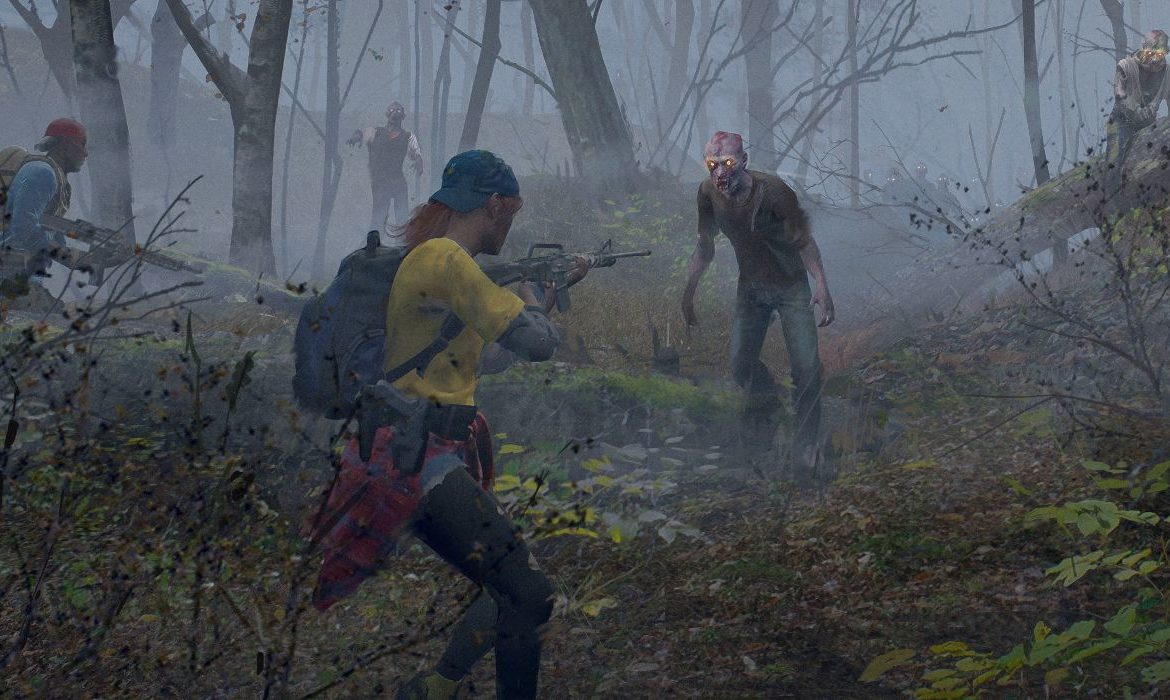
A Well Ridden Road
In the end, I had a great time with Back 4 Blood. Teaming up with buddies and gleefully throwing ourselves into masses of Ridden to brutally and blissfully destroy zombies was some of the most fun I’ve had in a game this year. It’s got chunky, satisfying gunplay with a strong offering of content and a surprisingly interesting card mechanic system.
The further on I played though, I couldn’t help shake the feeling that there was a certain spark missing. It feels like the developers were so intent on maintaining the heart of what made its colossal predecessors so beloved, they kind of forgot to give Back 4 Blood its own unique identity. There are absolutely some new mechanics introduced here that differ it from Left 4 Dead, but it just never hits its own shambling stride the way the original L4D titles did. There was a magic to those games that just feels lacking here. Killing zombies can never get old, yet the enthusiasm for doing so here dwindled ever so slightly after each run. Like making copies of a photo at infinum, it eventually starts to grey and loses that striking edge the original holds.
If you loved Left 4 Dead, let’s be honest you won’t even be reading this as you’ll already be playing Back 4 Blood religiously, and so you should, as there’s so much here for you to love. For those who aren’t in that dedicated subsection of the community however, I just wonder if Back 4 Blood has the same magic that’ll make it worth playing above its forefathers for years to come.
If you have a squad of like-minded buddies ready to lose many an evening to slaying some zombie infested hordes, Back 4 Blood will provide you plenty to satisfy that urge. It doesn’t quite capture the greatness of its forebears and it stumbles over itself with its erratic difficulty curve and repetitive nature, but Back 4 Blood has immensely satisfying, if simplistic, gameplay mechanic. This is a veteran, war-torn survivor who’s maybe danced this bloody dance once too many times, but it knows damn well how to deliver that co-op fun.

Back 4 Blood launches on 12th October on PS4, PS5 (reviewed on PS5), Xbox Series S|X, Xbox One and PC.
Developer: Turtle Rock Studios
Publisher: WB Games
Disclaimer: In order to complete this review, we were provided with a promotional copy of the game. For our full review policy, please go here.
If you enjoyed this article or any more of our content, please consider our Patreon.
Make sure to follow Finger Guns on our social channels –Twitter, Facebook, Twitch, Spotify or Apple Podcasts – to keep up to date on our news, reviews and features.
